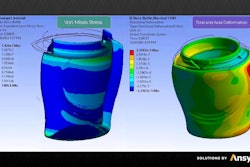
A state-of-the-art manufacturing line can be an exciting upgrade for any packaging and processing company, but a successful vertical startup is vital to achieving the desired outcomes.
That’s according to PMMI Business Intelligence’s 2024 report, “Transforming Packaging and Processing Operations.” The report details tips from the 2024 Top to Top sessions for packaging and processing executives on successfully starting a new line.
Good leadership and management buy-in is key for a vertical startup
Laying the foundations for a successful vertical startup begins before the project ever begins.
Among respondents at the sessions, the importance of strong leadership for a well-executed vertical startup came up seven times.
As one respondent said, “In order to be successful with a vertical startup, having an experienced leader in that market is critical.”
Planning and preparation
The need for a good plan before undertaking a vertical startup was paramount, with 25 different references to “planning.”
Plans need a clearly defined scope and specifications, respondents said. The importance of discussing and articulating the desired outcomes as part of planning was noted, including clear goal setting and success criteria.
When undertaking vertical startup projects, expectations need to be clearly communicated and documentation should be clear and comprehensive. As one end-user executive said, “Lack of communication, in a timely manner, is commonly the most disruptive trait of a poor startup.”
Plans should undergo “minimal tweaking,” once the plan is in place, one respondent said. However, challenges and unforeseen events can impact plans, and respondents highlighted the need for effective mitigation and contingency planning.
Key components of success once projects are up and running
Operational readiness was a key component of successful vertical startups, and respondents raised the need for effective training to achieve this.
A successful vertical startup should have “operators trained so that vendors are not running equipment,” said one respondent.
Participants spoke of having the right personnel involved in the startup, who can manage the many strands of the project. Several people stressed the importance of having a project lead, who is responsible for oversight and management of the vertical startup. PMMI Business Intelligence: 2024 Transforming Packaging and Processing Operations
PMMI Business Intelligence: 2024 Transforming Packaging and Processing Operations
Factory acceptance tests (FATs) came up in 15 responses, with calls for FATs that replicate both the product conditions and the environmental conditions that will be seen in production.
“Comprehensive FATs with actual product at rate are a key piece of testing the equipment,” said one end-user executive.
The need for effective site acceptance tests (SATs) was also raised. One end-user said an essential component of success is “completion of the SAT with minimal OEE drop when the vendors leave installation.”
Support was brought up various times by end-user executives, referring to support from leadership teams, OEMs, and trainers. The cross-functional nature of vertical startups came through clearly.
However, it is not only the support of internal teams from across departments that is required for a successful vertical startup, but also “good and close relationships to equipment vendors, service providers, and contractors,” one respondent said.
OEMs are aligned when it comes to what makes a successful vertical startup. Training and FATs were a preoccupation among OEMs, in addition to the same themes of effective planning, testing, communication, and clearly defined project scope that cropped up repeatedly among end-users.
SOURCE: PMMI Business Intelligence: 2024 Transforming Packaging and Processing Operations
For more insights from PMMI’s Business Intelligence team, find reports, including “2023 Achieving Vertical Startups” and “2023 Packaging and Automation in the Warehouses of the Future” at pmmi.org/business-intelligence.
Download the FREE report below.






















